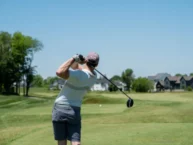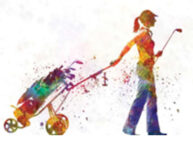 With the holidays just around the corner, you might be thinking of buying new golf clubs or equipment for your favorite golfer or even for yourself. There are sure to be some great deals out there. But buyer beware! Along with those great deals there are a lot of shady ones. Some of the biggest names in golf (Cleveland, Srixon, TaylorMade, Callaway, Ping, Titleist) have teamed up and formed The U.S. Manufacturers Anti-Counterfeiting Working Group, to fight against one of the biggest threats to golf: Counterfeit Clubs. Not only do these fake clubs not perform well, your handicap — and even your life may be in danger. I do not exaggerate! And here’s why.
With the holidays just around the corner, you might be thinking of buying new golf clubs or equipment for your favorite golfer or even for yourself. There are sure to be some great deals out there. But buyer beware! Along with those great deals there are a lot of shady ones. Some of the biggest names in golf (Cleveland, Srixon, TaylorMade, Callaway, Ping, Titleist) have teamed up and formed The U.S. Manufacturers Anti-Counterfeiting Working Group, to fight against one of the biggest threats to golf: Counterfeit Clubs. Not only do these fake clubs not perform well, your handicap — and even your life may be in danger. I do not exaggerate! And here’s why.
About three weeks ago I was playing with a gentleman I had only just met. As we both approached the first tee we exchanged the usual “hellos” and he stepped up onto the white tee box for his first drive of the round. It was a good thing I was holding back just a little behind him because as he swung his club, the head of his driver came flying off and headed straight into the woods to my left. If I had been just a few feet in front of the spot I was standing, there’s a chance that club head would have hit me.
The man had all he could do to contain himself. He just stared at the raw end of his club shaft and shook his head in wonder. It was then I heard him mutter, “Damn! Same thing happened to my three wood just last week.” He shook the shaft at me. “I paid good money for these clubs. They’re Taylor-Made and supposed to be high quality.”
 I didn’t say anything at the time, but I suspect that what the man had actually purchased were counterfeit clubs. They look very similar to the originals, but are made of inferior materials and the workmanship is really shoddy. The price was probably too good to be true, and you know what they say, “You get what you pay for.” In this golfer’s case, it was too true.
I didn’t say anything at the time, but I suspect that what the man had actually purchased were counterfeit clubs. They look very similar to the originals, but are made of inferior materials and the workmanship is really shoddy. The price was probably too good to be true, and you know what they say, “You get what you pay for.” In this golfer’s case, it was too true.
So how do you spot a fake? How do you avoid buying a counterfeit golf club? Here are a few tips and questions to ask yourself taken from the KeepGolfReal website.
- Are you purchasing new golf equipment from an authorized dealer?
- If you’re purchasing from a discount vendor, are they approved to be a vendor for the product line? Be particularly careful if you are buying new equipment from a seller on ebay or Craig’s list.
- If you notice slight differences in the appearance of the club, i.e. shades of color, slightly different engravings, it’s probably a fake. Top manufacturers do not sell “seconds” with blemishes.
- If the club you purchase on a website is being shipped from China, you should be concerned. Chances are high that it is fake.
Hope this post gives you some insights into buying the real thing next time you plan on purchasing new golf equipment. If you’ve had an experience with the problem of counterfeit clubs, tell us how you handled it.
You can read more about the problem of counterfeit golf clubs at the website for the U.S. Golf Manufacturers Anti-Counterfeiting Working Group.




